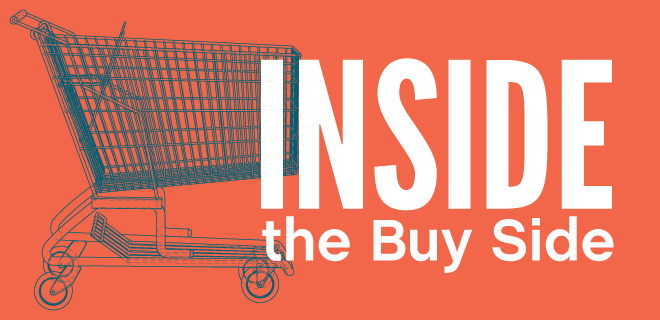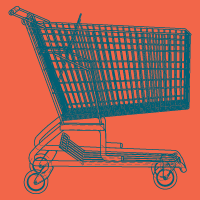
Retail media is more than just a performance channel — it’s a brand-building powerhouse. Discover how retail media is transforming advertising, from Amazon’s pioneering role to the untapped brand marketing potential in this $46B industry poised to hit $100B by 2026.
For as long as retailers have existed, they have sought ways to monetize the audience they bring to suppliers. From end caps to circulars, retailers have been a pervasive, but understated, media partner to brands of all sizes.
But nothing in history has the scope and potential of retail media–the process of selling inventory on their websites, and other owned channels, to brands.
It’s quickly becoming a huge market for advertisers, reaching $46B of ad spend in 2023. That is significantly higher than CTV, which was estimated at $25B. It is also expected to reach $100B by 2026.
While some might consider retail media a performance marketing channel, Upwave data busts that myth, showing it is also a brand-building powerhouse.
Upwave’s recent analysis of over 500 retail media campaigns, spanning 300+ brands, found that 96% of campaigns had a positive lift on at least one brand KPI, 87% of campaigns had at least one brand KPI that was above Upwave Norms, and 18.8% of campaigns exceeded Upwave Norms for all brand KPIs.
The Rise of Retail Media
As with other eCommerce advancements, Amazon deserves credit for building the modern retail media network environment. Once Amazon became the online store for virtually everything, they realized millions of people were coming by daily to buy a variety of things. Amazon could sell space on its various product and category webpages to companies looking to influence those visitors. That first-mover advantage has paid off. Over 75% of the current US Retail Media investment is spent on Amazon advertising. Walmart is second, via its advertising solutions division, Walmart Connect.
There’s a simple reason why so many retailers are joining the ranks of retail media: the channel can produce margins of up to 90%, according to the Boston Consulting Group. We’ve even heard that it’s not hyperbole to suggest retailers would gladly do away with selling goods if they could just make the same amount of money in the media.
Now, brands as diverse as Uber, Sephora, Sam’s Club, and Best Buy all have their retail media networks.
Unsurprisingly, performance marketers have flocked to retail media as a way to monetize that audience immediately. And, sure, it makes perfect sense that people browsing a retailer’s website are considered to be in the market to buy now.
However, retail media is a huge opportunity for brand building, one not nearly enough companies are taking advantage of. That means industry watchers are potentially even underestimating the future revenue opportunities from retail media.
Here’s why.
- The massive first-party data retailers are sitting on. It’s no coincidence that retail media is at the top of the minds of all advertisers at a time when cookies are going away. Retailers are better equipped than almost anyone else to offer targeting capabilities to advertisers and their agencies. They have a plethora of data on hand about households, such as if they have kids. For example, a car manufacturer can more accurately advertise its suite of cars to the right buyers (e.g. a minivan to those with multiple children).
- Not everyone on those websites is in the market to buy. It’s hard to track down specific stats for how many people visit a website without adding something to their shopping cart but the overwhelming majority of visitors do not purchase at the time of visiting. Sometimes people are browsing and not looking for something specific. Even those looking to make a purchase could be stopped in their tracks by a brand-building ad regardless.
- Non-endemic ads performed as well, if not better than endemic ones. Another myth busted for this channel, Upwave’s study found that advertisements featuring products not for sale on retail media sites outperformed those that you could buy in several key areas, including ad recall, consideration, and purchase intent. One reason is the ad stands out as unique amid dozens of product listings. For example, an ad for insurance may be more noticeable among kitchen staples on a grocery store website.
- Its reach extends beyond the retail domain. Amazon has Prime, a video platform increasingly winning high-profile deals like NFL broadcasts and producing large-budget shows like Lord of the Rings. Walmart has agreed to acquire Vizio, a manufacturer of smart TVs. Rakuten purchased eBook company Kobo. That’s in addition to their ability to place ads on third-party sites they don’t own. Retailers and eTailers alike are looking to expand their reach as far as possible, given the data advantage they have on many other websites. Retail media offers much more than on-site placements because they can better validate those audiences.
- A strong trust factor. Individuals browsing their favorite retail websites, apps, or streaming from retailer-owned platforms, are likely to trust those who run ads on the site. A 2024 eMarketer study found consumers trusted ads on retail sites almost double that of social media or third-party marketplaces. Furthermore, slightly over 50% of respondents were more likely to buy items and try out a new brand they hadn’t purchased before if a retailer advertised them. This is especially important for newer brands looking to build up their name recognition and trust. Our study found retail media tied with online video as driving the most consideration against all other mediums. Frequent shoppers of a particular website could learn about a brand one day through a well-placed ad intended to drive consideration, and then return days or weeks later to make a purchase.
Now is the time for brand marketers to reevaluate their channel mix and take another look at this medium. By understanding that brand-building is a possibility in retail media it opens up the category for more growth than what is being predicted. All of our data demonstrates it’s a huge opportunity for brands looking to impact consumer behavior along the mid-lower brand funnel. Now is the time for brand builders to embrace the opportunity before the rest catch on.
Source: here
